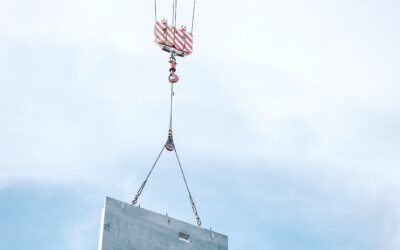Sea levels around Britain have risen by 6 inches (15.4cm) since 1900, and the Met Office predicts modern levels could increase a further 3.7ft (1.12m) by 2100, threatening communities on sea cliffs and coastal floodplains around much of the east and south coast of England.
Here are some recommendations of things you can do to help prevent your property from flooding or at least minimise the damage should water enter your property.
1. Check Flood Risk
Your first step should be to establish how at risk your property is. Once you know this, you’ll have a better idea of how seriously you need to take flood defences in your home.
The best way to check your flood risk is via the government’s long-term flood risk tool. This will give you an overall flood risk rating as well as a link through which you can view maps of your area showing the risk from rivers, seas, reservoirs, and surface water.
But, here’s a warning. Even if the tool tells you you are unlikely to flood, the data is only based on historical evidence. With environmental changes, and new homes and estates being built all the time, your risk can change. Therefore, it’s always worth taking at least a few precautions. Better to be safe than sorry, as they say.
2. Understand The Flow Of Water
Look around at your property and assess where flood water would be most likely to come from, where it would build up, and in which direction it would flow through your property.
Things like walls, gates, and fences can all affect the flow of water and cause water to collect in certain areas. Check whether this may put certain areas of your house at high risk if flooding occurs. If there is a way water could drain away from your property naturally, make sure there is nothing that will block the natural flow.
3. Install Extra Drainage
Adding extra drainage around the edges of your property can help to keep water levels down to a minimum (providing they are cleaned out regularly). Aco drains can be placed alongside your property and connected to a surface water drain to help stop water even reaching the walls.
However, keep in mind that during significant flooding, surface water drains often overflow. That means such drainage only has limited benefit and may not help with more significant events.
4. Keep Some Grass!
It’s seen as desirable to keep gardebs as low maintenance as possible or to pave over front lawns to create extra parking space. However, doing so prevents water from draining away naturally.
Leaving a grassy area not only gives a route for water to drain away, the grass itself will also help to soak up some water. If everyone left their gardens as grass and soil, there would be less danger of flooding for everyone.
If your garden is paved over, we recommend you look into implementing a good drainage system.
5. Prepare Sandbags
Perhaps the most basic and common flood defences around. Sandbags placed around places water can enter property are not 100% effective, but they do slow water ingression down significantly and help to divert it away from your home.
They are cheap and quick to install. Just keep a few bags ready to go in a garage or shed so that if a flash flood occurs, you can quickly put the sandbags down where you need them.
6. Install Self Sealing Air Bricks
One of the main ways flooding causes damage to properties is when it enters through air bricks. Air bricks are the bricks with holes in you’ll find around the outside of your house, raised a little from the ground.
They provide ventilation for suspended wooden floors that prevents moisture build-up and therefore damp or rot problems in flooring. In normal conditions, they are very effective.
However, when flood levels are high enough for the water to enter your property via the air bricks, it can cause serious long-term damage. The solution, therefore, it to install self-sealing air bricks as these contain balls that rise with the water level, sealing off the holes to prevent water entering your property via the air bricks.
7. Install Flood Barriers
Flood barriers are a fairly serious defence that, when installed correctly, are very effective at keeping water out. They consist of brackets installed at either side of an opening such as a doorway in a garage or conservatory.
When flooding is possible, you simply insert a metal panel into the brackets and tighten up the fixings. This creates a water-tight barrier that prevents water from entering the property.
8. Fit Flood-Proof Doors
Flood doors are an excellent, permanent solution for anyone concerned about water entering their property via a doorway, and they look just like normal doors. They are more effective than sandbags and are in operation all of the time that the door is closed. This means that even if flooding strikes when you are away from home, your flood defence will still protect your property.
9. Install A Concrete Floor
Cmbine a concrete floor with damp proof membranes for the best protection.
A concrete floor does not need air bricks, reducing the opportunities for water to enter your property. They also can resist absorbing water for longer than wooden flooring and do not have any voids to clean out after a flood has occurred.
However, they also take longer to dry out if they do soak up moisture so there are disadvantages to consider too. Consult a flood defence expert if in doubt as the cost to install a concrete floor with damp proof membranes may not justify the flood defence benefits.
10. Raise Electrical Sockets
No matter what you do to prevent water entering your property, you can only lower the risk of flooding, not remove it altogether.
For that reason, look at what you can do to minimise the damage if the worst happens. For example, if you are particularly concerned about flooding, get an electrician in to move your plug sockets higher from the ground.
That way, if the worst does happen, your electrics will be safe, and it will be one less cost and hassle to worry about once the water has gone. If you have a particularly expensive TV, you may also want to consider mounting it on the wall a good distance from the ground.
For More Help
If you want more help on how to protect your property from flooding, contact your local water company. They often have sections on their website dedicated to what you can do to prevent flooding. Alternatively, bring in a specialist flood defence company to assess your property and recommend the best courses of action.
Remember, if a flood looks like it may occur, move as much furniture upstairs as possible and be sure to implement any defences you do have, such as sandbags or barriers.
If your property does flood, make sure you take some photographs of the damage once safe to do so and contact your insurance provider as soon as possible. You’ll also want to start removing any damaged furniture or flooring as soon as you can as the quicker you can dry your property out, the better.
If you need any advice or are looking to buy an investment property we would be delighted to assist and help you with a ready made team. Call direct on + 44 (0) 207 993 4081 or simply send an email for a fast response.



